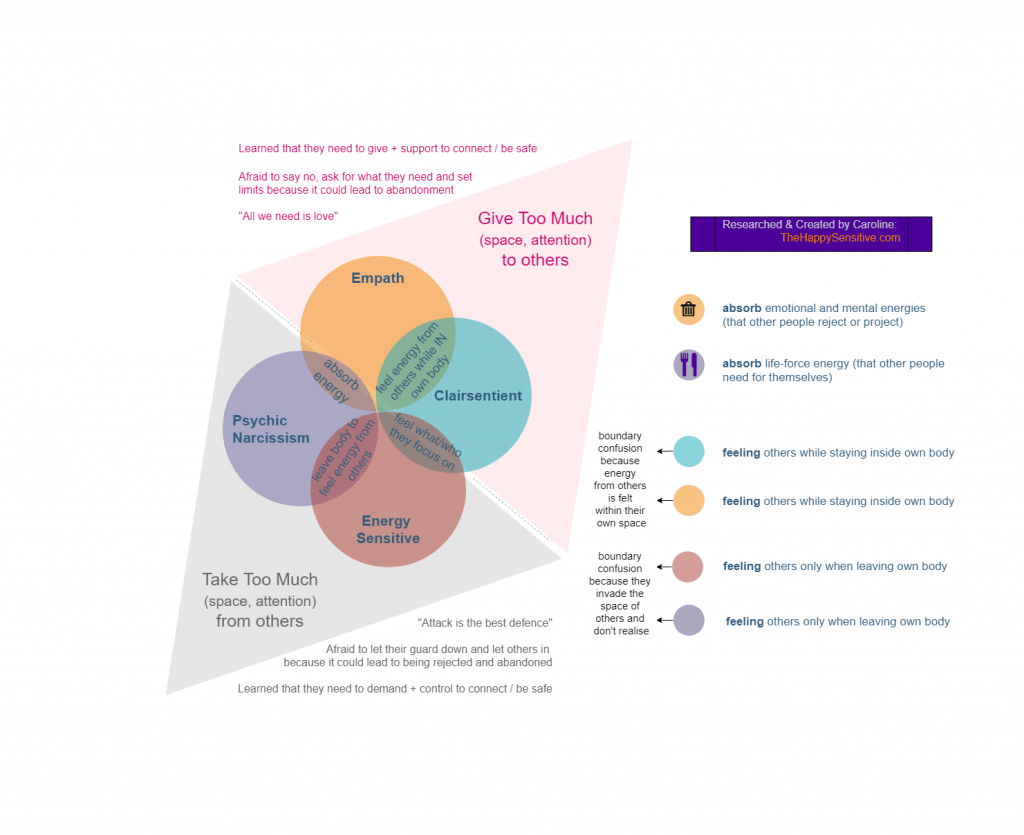If you’ve been reading my articles for a while, you know that I care a lot about the many subtle and technical distinctions between many kinds of sensitivity.
Why? Because depending on the underlying mechanisms of your sensitivity the solution you need will be radically different.
You could compare it so something everyday like feeling sore. Depending on what is causing the soreness, the solution is different:
- you feel sore because you did a very heavy work-out yesterday = > take a juniper bath, get a massage, rest, stretch the painful muscles, use magnesium cream
- you feel sore because you have been sitting all day = > go for a walk, stretch, do a work-out
- you feel sore because you have a flu coming on = > rest up, get lots of sleep, drink ginger lemon tea
- you feel sore because someone punched you in the arm = > use a soothing balm
Like in the example above, there can be overlap. Some solutions can work for different problems. Others only work for one very specific underlying issue.
It’s like that with sensitivity too. Especially when it comes to sensitivity to energy.
Empaths are Everywhere – or are they?
When it comes to sensitivity to energy, what is currently happening online is this:
Most people who are sensitive to energy are calling themselves an empath. Even when they are not.
(This by the way is very different from what was happening online some five years ago, when most people – including actual empaths – shunned the word empath because it was just “too weird”).
Now, you could argue that there are just many different kinds of empaths and that they are all empaths. Yet, as you can see in the infograph that I made (further below):
I was not born knowing this, but in my work I meet a lot of people who are sensitive to energy, and over time I’ve become more and more clear on what the exact differences are, what works for whom and why.
Calling everyone who is sensitive to energy an empath is like saying that spending money and saving money is all the same thing, because it all involves doing something with money.
Obviously, that is not very helpful. If you’re an overspender who needs to learn how to save, then your problem is different from someone who saves everything and is afraid to spend any money.
Dumping all those people in the same class could make for some interesting discussions, but it probably wouldn’t be very helpful. The spenders might excitedly listen to all the reasons why it’s good to spend money (all rationale to spend more!) and the savers would just lap up all the advice on how crucial saving is (all the more reason to not spend anything!). Neither would learn what they needed to learn.
This happens with talk on empaths too.

The Big Empath Heap
By throwing everything onto one heap, many people extrapolate and strengthen their existing tendency, instead of balancing it out.
This means a lot of people get more out of balance, because they naturally gravitate to the practices that are the most comfortable. The most comfortable practices are always some version of what we are already doing (it feels familiar and right, because we’ve done it before).
You need to know not just what most people call it, but what the underlying mechanics are.
Because here’s another confusing thing, different people give similar things different names. So, the crucial thing is not the word that someone uses (“oh, they are using the word “empath” so they are talking about the same thing as me when I say “empath”!” – not necessarily so). The crucial thing is the tendency and the deeper energy mechanics someone is referencing.
Confusion is Stressful
A lot of people throw words around without understanding what they mean.
I spoke to someone recently who was convinced there was an energy cord between him and someone else. Why? Because an intuitive friend said so.
Yet, in hearing more about the situation it became clear that a lot got lost in translation and a lot of assumptions were made along the way. It seems both of them had heard of energy cords and hopped to the conclusion: ‘oh, that must be a cord.’ Yet, when I checked what was what, there was no cord at all. There was energy influence yes, but not in the form of a cord.
Meanwhile, the guy in question had tried hard to cut the assumed energy cord and it didn’t work. Yeah, it didn’t work because there was no cord. When I showed him the technique that was appropriate for what was actually happening, he noticed a big difference right away. That’s because it was the right solution for that particular problem.
So, I understand it’s more fun for someone to take an online quiz about “what kind of intuitive superstar you are” and then slap a whole bunch of cool labels on their book bag. Or randomly start cutting energy cords because they read or heard somewhere that that apparently causes everything, but that is not actually helpful.
A lot of people who are truly intuitive (and not just looking for a cool identity) get very stressed out by all the invisible things they are picking up on. Giving them an impressive-looking badge does not help. Giving them a bunch of random techniques to experiment with (and that can make an even bigger mess of things) does not help. What does help is diving into which deeper energy mechanisms are actually affecting them, so that something can be done about it.
An Infographic of the Different Ways of Being Sensitive to Energy
On that note, I’ve been working on an overview to show you how different various kinds of sensitivity to energy really are. I’ve been getting lots of questions on this lately and it’s actually really hard to explain in words-only, so I decided I’d try my hand at an infographic.
(click the image below to be able to zoom in on the graphic – when you click on and then mouse over the image, a bar with zoom and print options will pop up)
If you’d like to hear about all the information contained in this chart in more detail, I have done a live class on this, walking you through the differences with Q&A from participants so you can better understand the wealth of differences between all these different mechanisms that most people all call “empath”. You can find this “Core Differences” class in the Happy Sensitive Library.
The interesting and confusing thing is that someone’s obvious, visible personality can be one way, and their deeper energy patterns a different way.
For example, someone who seems very passive and “go with the flow” on the surface, can – on the energy level – be really agressive and controlling. This is not all hocus pocus. The psychological bridge here is passive agressiveness which means that their surface personality (“sure, no problem”) does not match their deeper beliefs and emotions (“I am so mad right now, why don’t you do what I want??!!”). So much so that the passive agressive person does not recognize or understand their own anger. Yet, it’s there, and it’s driving how they interact on the psychic planes too if they are sensitive to energy.
The infographic describes someone’s energy personality if you will. Some people are pretty much the same on all levels, others are like two different people in one. For more ins and outs on the infographic, so you have a better grasp of how and why all these 4 types tend to describe themselves as empaths, even though they are not, listen to the call in the Library, here.
.
.
.





















